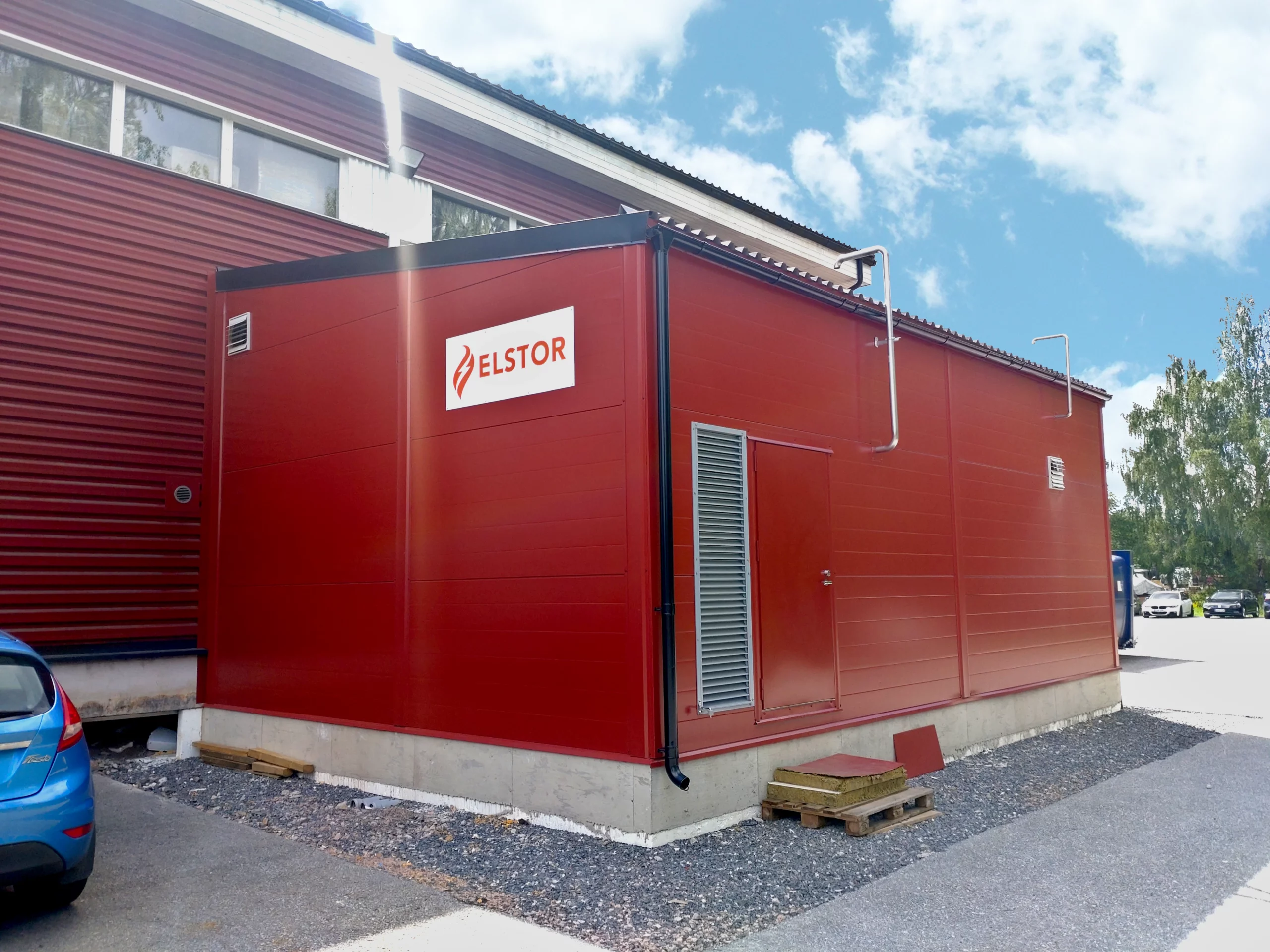Lappeenrannan Lämpövoima
Elstor Thermal Energy Storage Selkäharju unit has a long and interesting history, as it is the company’s very first thermal…
Elstor Thermal Energy Storage Selkäharju unit has a long and interesting history, as it is the company’s very first thermal storage facility. It was originally built as the first prototype for the Mustola district heating plant. The first prototype provided Elstor with a lot of valuable information about the functioning of the unit. The equipment was later upgraded to incorporate the latest Elstor technology. At the same time, the equipment was transferred from Mustola to the Selkäharju district heating plant.
Initial Situation in Selkäharju
In Lappeenranta, the Selkäharju area operates a separate district heating network. Heat has been produced in this network, among other methods, by burning natural gas. The annual carbon dioxide emissions from the use of natural gas are approximately 320 tonnes.
“The thermal energy storage replaces natural gas, and it is estimated to reduce annual carbon dioxide emissions by over 300 tCO2e.” Miika Alatalo, Expert, City of Lappeenranta
Miika Alatalo, Expert, Lappeenrannan kaupunki
Situation with Elstor Device
Elstor’s equipment produces heat for the local district heating network. The heat produced with carbon-free electricity replaces the use of natural gas, reducing carbon dioxide emissions from production. Lappeenranta Lämpövoima has expanded its district heating network in Selkäharju thanks to the additional production from Elstor device.
During the first heating season, the average price of the electricity consumed by Elstor’s heat storage has been around 5 cents/kWh. The average price of the charging hours has been on average around 26% below the average market price. The period under consideration during the first heating season also includes test periods for the commissioning of the installation, during which the charging hours have not been optimised. In the future, we can therefore expect an even lower unit price compared to market prices.
“Thanks to Elstor’s storage capacity, heat can be produced when there is excess electricity and released exactly when the district heating network requires it. This allows for smoothing the operation of the electricity grid. Elstor’s device enables the expansion of the Selkäharju district heating network with a new modern and cost-effective production facility.”
Jarkko Kovanen, CEO, Lappeenrannan Lämpövoima Oy
During the first heating season, the Elstor plant produced around 850 MWh of district heat. The amount produced corresponds to the heat consumption of about 100 private houses. The early operation over the last six months has resulted in a CO2 emission reduction of about 140 tonnes in Selkäharju.
Elstor heat storage facility is also well suited to provide additional flexibility capacity for district heating stand-alone networks. Here too, the benefits of the unit are generated by the fully independent charging and discharging processes, which allow the use to be optimised not only according to hourly electricity prices, but also according to the reserve market. The high energy density storage structure of the Elstor system allows high charging and discharging capacities in relation to the storage capacity, supporting the participation in the reserve market.




